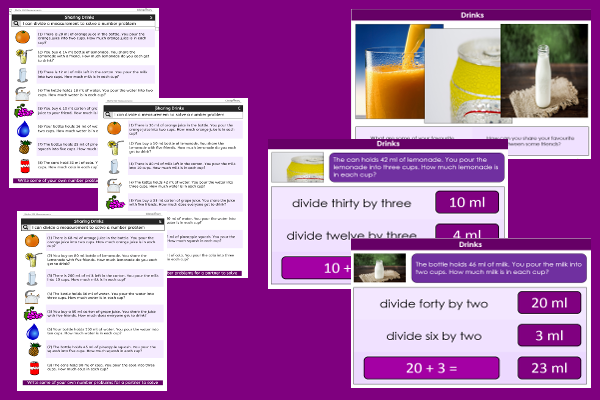Home > Key Stage Two > Maths > Number > Division > Measurements
Sharing Drinks

This maths teaching pack for Key Stage Two gets the children to identify and model how to divide different capacities in millilitres by two, three, five and ten to solve a range of measurement word problems about drinks.
The class can explain and illustrate how to use facts about numbers to support their calculations when identifying each division quotient to complete the number problems.
Download this teaching pack including classroom activities and an interactive presentation to identify and model how to divide different capacities in millilitres by two, three, five and ten to solve a range of measurement word problems about drinks
Activities in this teaching pack include a differentiated sets of worksheets to practise solving measurement word problems to divide different drink capacities by two, three, five and ten using division number skills including using times tables facts and repeated subtraction.
The interactive presentation gets the children to explore how to divide different capacities by two, three, five and ten to solve measurement word problems about drinks.
This lesson is part of a maths scheme of work to get the children to practise solving problems using division number skills to divide measurements for length, capacity and mass using a range of matching units. There are teaching activities for shared learning, differentiated worksheets to support independent learning and interactive presentations to introduce concepts and key skills.
-

School Grounds
Explain and model how to measure and calculate the perimeters and areas of different shaped locations around the school grounds
-

Rainforest Presentations
Select, manipulate and combine different forms of media to create a multimedia presentation about an aspect of life in a rainforest habitat
-

Flag Printing
Practise and refine different techniques when printing colours, shapes and patterns to design flags to match specific locations
-

Angle Observations
Identify, locate and classify examples of right, acute and obtuse angles that can be observed in a range of different shapes, objects and locations
